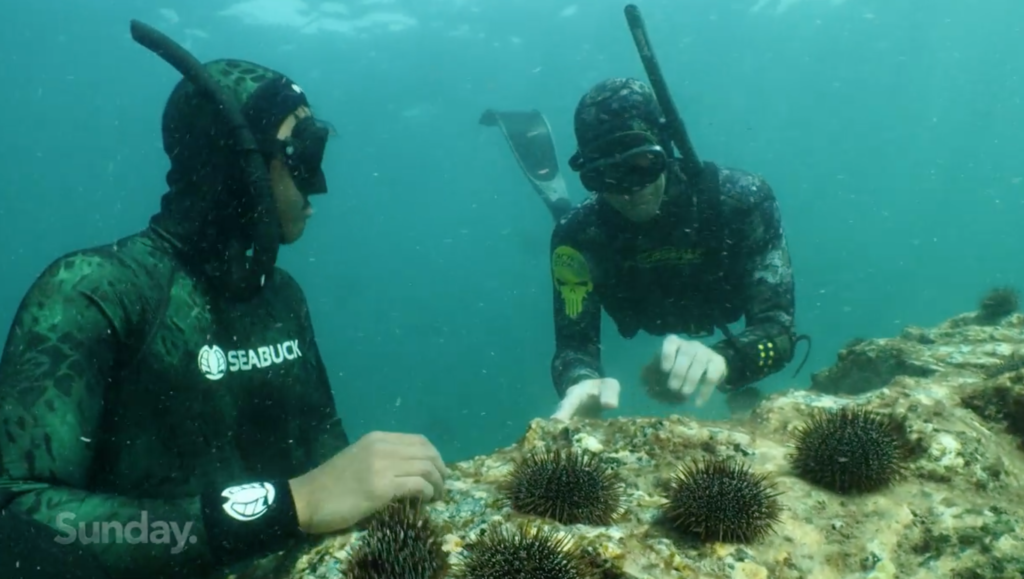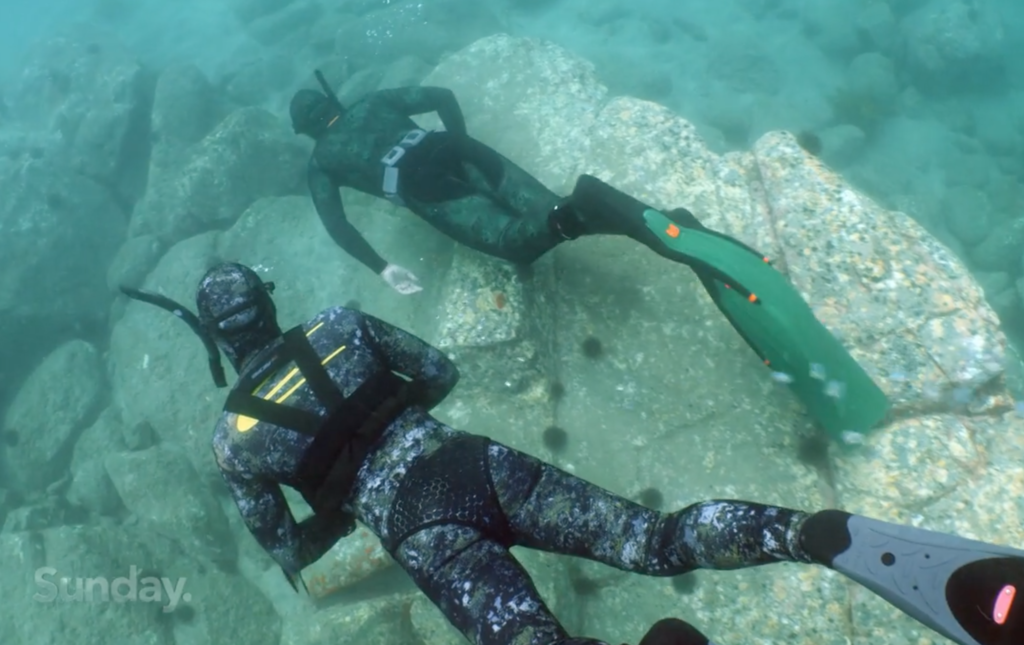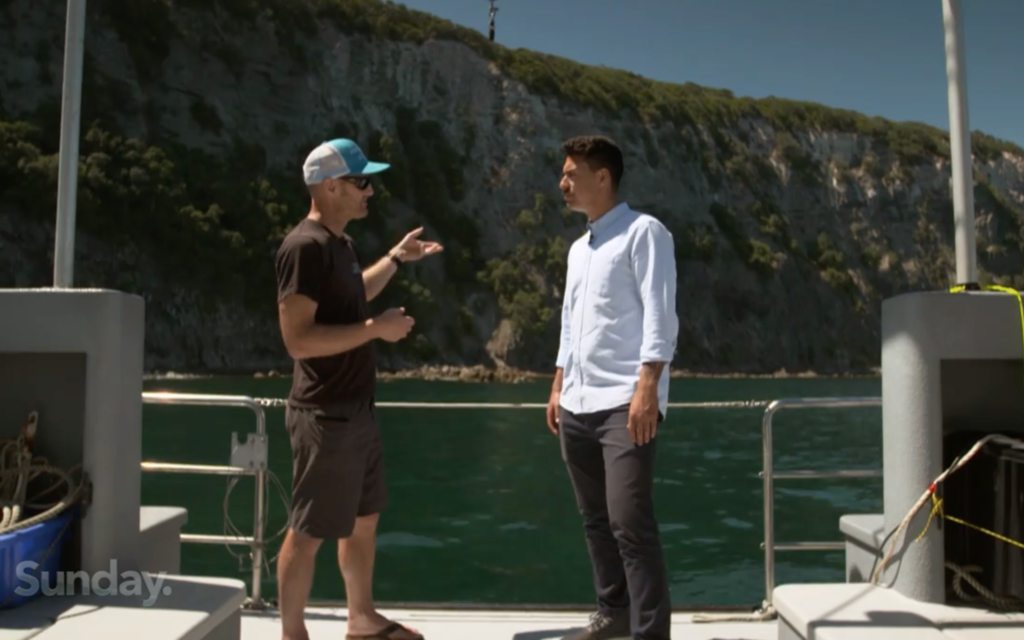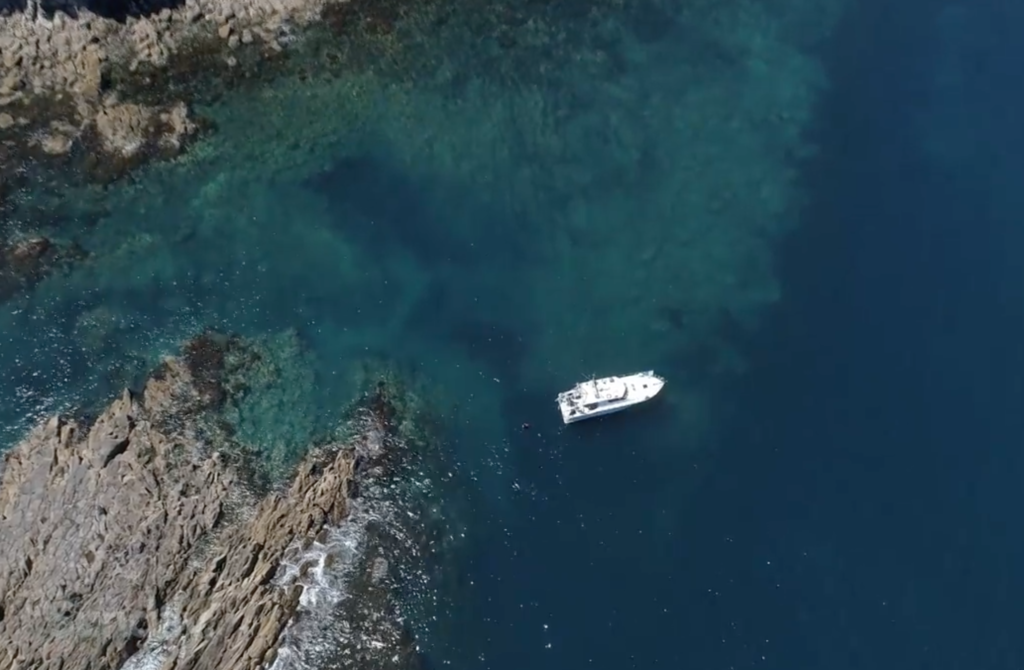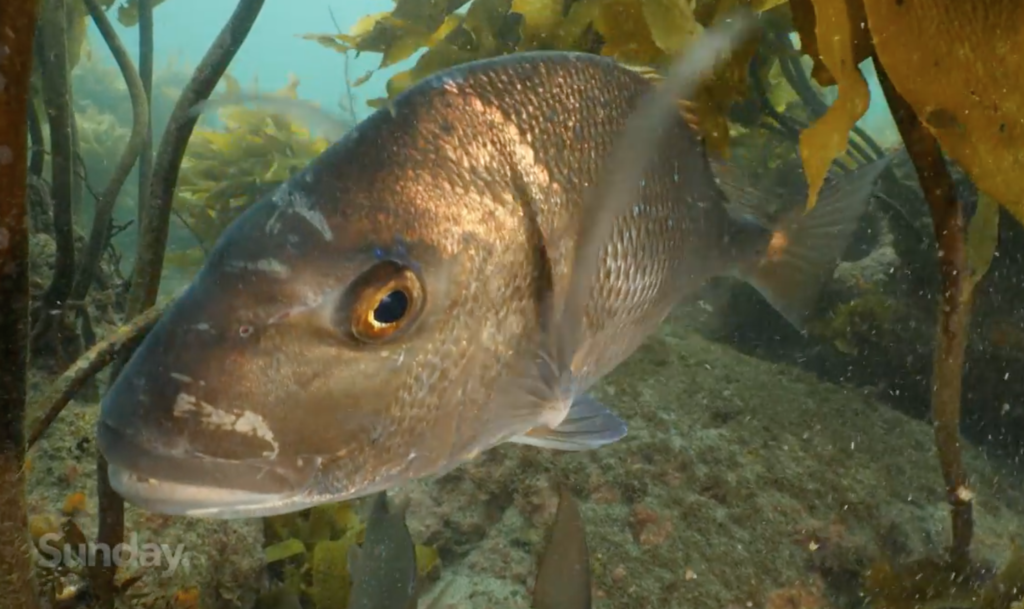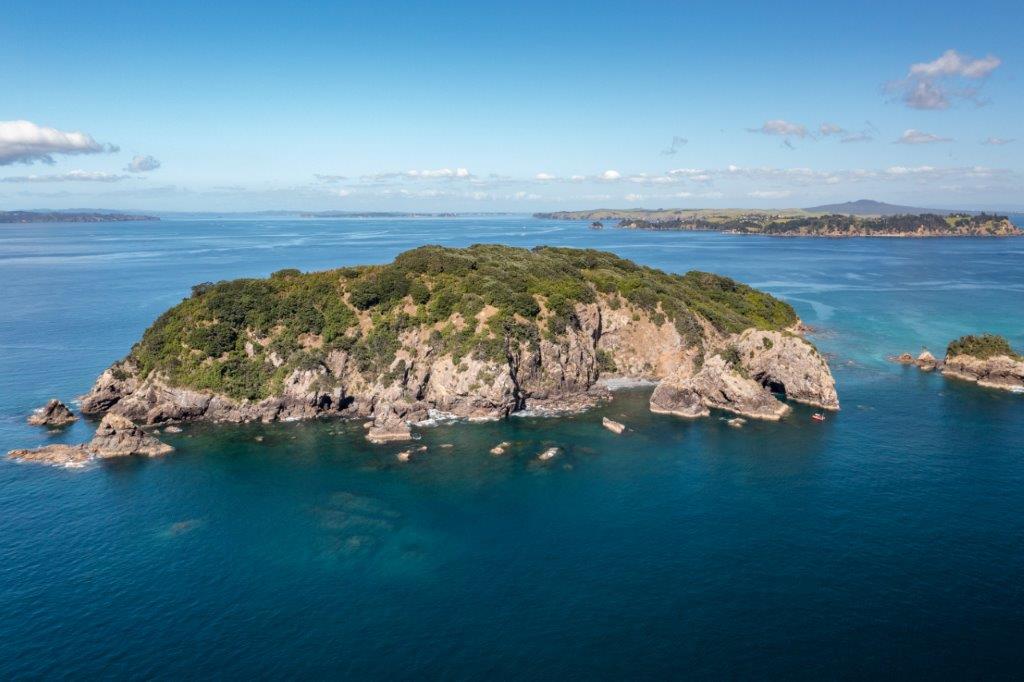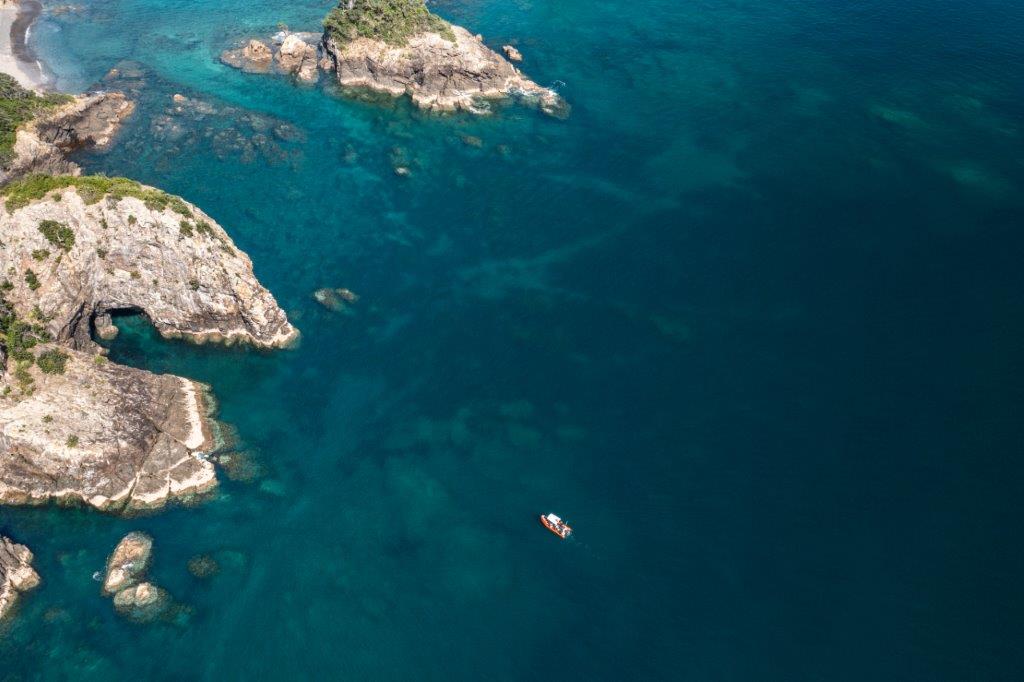The Noises hold a very special interest for seabird lovers. Being home to at least…
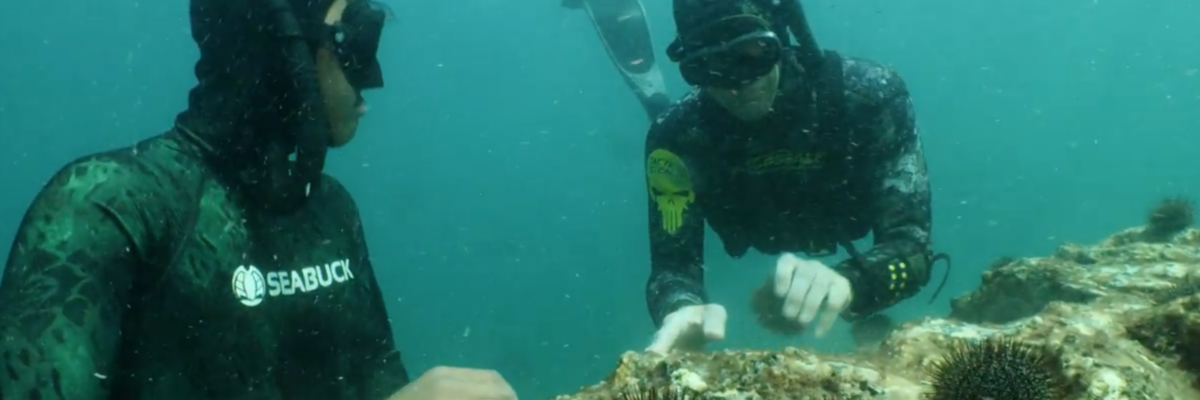
Troubled Waters: Nick Shears appears on TVNZ talking about kina barrens
Marine scientist Nick Shears, who’s part of the Noises’ marine restoration project team, was recently featured in a Sunday documentary about the state of the Hauraki Gulf.
As a frequent visitor and a lead researcher on the Noises restoration team, Nick understands better than most the plight of the marine ecosystem, especially the increase in kina.
“Kina numbers have got out of control, in the same way that possums have been allowed to get out of control on the land. They’ve grazed down a lot of the kelp forest,” he told journalist Tamati Rimene-Sprout for the Sunday show called ‘Troubled Waters’.
“Currently we estimate that at a place like Hauturu-Little Barrier Island about 50% of the shallow reef is in kina barren. That’s like taking half the forest off the top of the island.”
Nick estimates a similar proportion of loss is occurring at the Noises.
Nick was featured in the documentary alongside commercial and recreational fishers, the Hauraki Gulf Forum co-chair Nicola MacDonald and NIWA scientist Bruce Hartell. Remarkably, all of those interviewed agreed the Gulf needs greater protection. The Forum’s ambition is to increase protected areas from the current measly <1% to 30% of the Gulf. We’d love to see the Noises in that 30%!
Asked why kina barrens are expanding Nick says the science is unequivocal: overfishing.
“What we’ve seen is that barrens have increased in extent and occur with greater frequency. Without predators like snapper and crayfish, kina are free to expand where the conditions are right. Crayfish are talked about as being functionally extinct, because they no longer play a role in controlling kina, and the same is true of snapper.”
Proof of the connection between fishing and kina barrens exists at the Goat Island Marine Reserve where Nick and his University of Auckland team are based. Forty years ago, before the reserve was established, ~40% of the reef was a kina barren. “But what we’ve learned is that with the recovery of snapper and crayfish we see a decline in kina barrens and a recovery of kelp.”
Tamati put it to Nick that some evidence suggests snapper populations are recovering in the Gulf. “The stock may be healthy from a fishery perspective which is great for fishing, but for snapper to play a role in the ecosystem they need to be large,” said Nick.
“The large snapper will eat the large kina and eat more kina – but they are also the first snapper that are removed [by fishing].”
Anecdotal reports suggest crayfish and scallops have effectively been lost around the shallow waters of the Noises. The extent of the loss and the role of kina removal in kelp forest recovery is currently being examined by Nick’s team from the University of Auckland as part of the marine restoration programme. Stay tuned for more!
To watch the excellent short documentary, Troubled Waters, click here.

